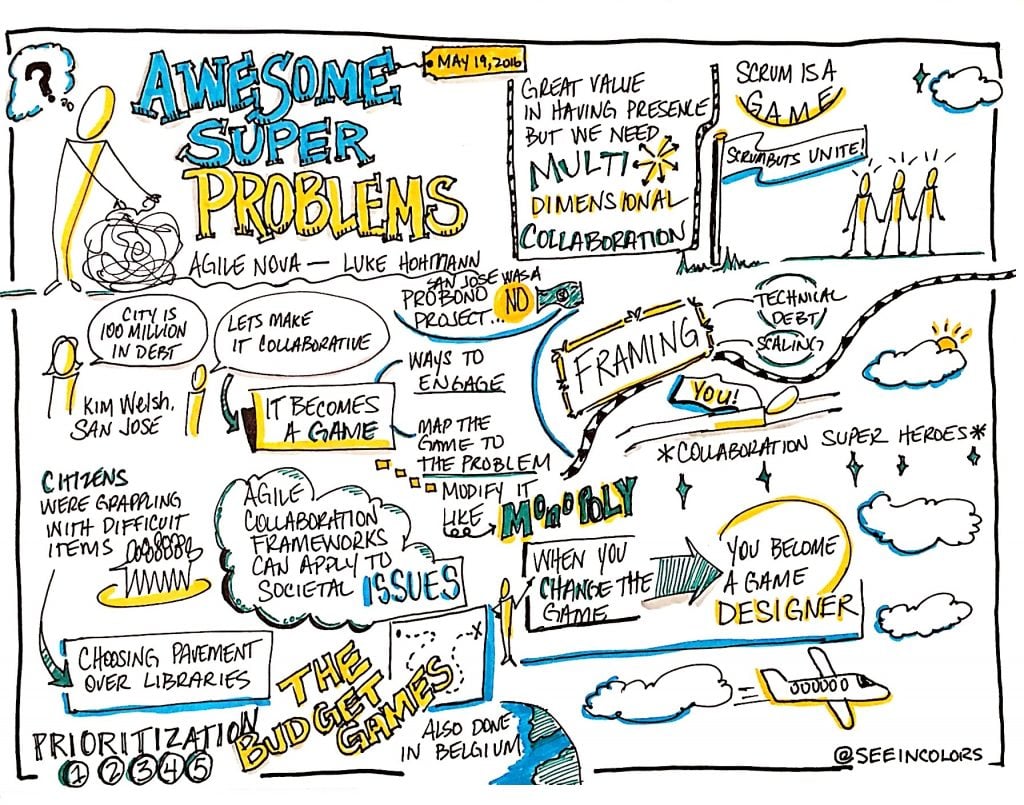Updated: May 6, 2024- 8 min read
When you’re hunting for your first job as a Product Manager, it's quite likely you'll need experience in or at least an understanding of agile product development. This means that you need to get to grips with this methodology to have a successful career in the product world.
Here, we’re going to dive into exactly what agile is, where it came from, the core principles, and what it looks like in the real world.
What is Agile Methodology?
In tech, things can change at the drop of a hat. Markets can shift, a competitor can dominate, new and more innovative tech can emerge out of nowhere. If you’re a great Product Manager, you’re constantly conducting research and keeping an ear out for what customers want/need, and new research insights can also impact the direction your product takes.
What happens if you’ve already started building a new feature, or even a whole new product, only to find that something impactful has changed? Are you stuck on the same trajectory, only able to give up, or keep going?
Adopting an agile approach to product development means not only being able to react to change, but actively expecting things to change. When you anticipate change, you’re able to react with the times and make a product that truly fits into the market. That’s agile.
You might also be interested in: Understanding Product-Market Fit: A Product Manager’s Guide
It’s a philosophy that means breaking projects down into small goals and working towards them while adding new ones. It’s set up so a software development team can react well to changes.
With agile, the roadmap is a shifting, collaborative document that offers teams the chance to keep asking ‘Where are we at right now, and is this still the right direction to go in?“.
There are many different methodologies within agile (Scrum, ASD, FDD) but let's keep it simple today with good ol’ agile.

Old vs. New: The Waterfall Method vs. Agile
So where did agile come from, and what came before? Veterans in the tech industry will well remember its predecessor, The Waterfall Method. This is still popular and in use in Project Management, as well as in many more traditional software development companies.
The Waterfall Method:
This method was developed over 30 years ago and focuses on planning and documenting.
Named ‘waterfall’ because progress flows from the top down, this methodology is based on breaking a project down into sequences, with a much more linear development plan. The main principle of waterfall is that each stage of the sequence must be completed before teams can move on to the next, so whatever you’re going to continue working on is based on what you’ve already built.
When new information comes along, it’s very difficult and expensive to go back and make changes.
The second principle of waterfall is that there is very low customer involvement, and limited to set milestones.
The third principle is strong project documentation.
Pro: It enforces clearly defined requirements upfront, and it is easier to plan budgets and timelines.
Con: Validation occurs too late and change is costly.
The Agile Methodology:
Developed less than 20 years ago, agile focuses on being flexible in development, while still moving forward. Unlike waterfall, agile product development can be messy and less linear. But that doesn’t mean that it can’t be productive.
This Agile planning onion graphic from Hubstaff is an accurate way to visualize this process. As you’ll see below, the circles represent the different project stages, which all intersect at one common point. This represents entry points to the succeeding project stages or previous ones should you need to go back.

By anticipating the shifts and changes that will impact development, teams are able to go back and adapt.
Agile is also more customer-focused, with research and testing being conducted constantly throughout the process.
It’s also a more people-focused approach to development. Teams are self-organizing, and development is driven significantly by the creativity and talent of the people working on the product. This means that there is less focus placed on processes and documentation. Whether that’s a pro or a con depends entirely on the company, industry, and product being worked on.
Pro: Agile product development is more adaptable
Con: Less structure and planning makes project planning, budgets and timelines are harder to predict.
Agile History – The Agile Manifesto
Agile Development was introduced in 2001 by when 17 software developers got together at a ski resort in the Wasatch mountains of Utah and wrote the Agile Manifesto. This document still exists online in its original format, and lays out the 4 core principles of agile:
Individuals and Interactions Over Processes and Tools: This is a people-first mindset that places more value on the team than the structures they have to work with. In practice for a product manager, this might mean changing your processes if they’re not working for the team, rather than forcing the team to adapt to the processes.
Working Software Over Comprehensive Documentation: Before agile, pages and pages and pages of documentation were required before any part of the development process began. Now teams place the emphasis on getting the product into the hands of the customer. Agile product development prioritizes the product, not the bureaucracy around it.
Customer Collaboration Over Contract Negotiation: A key agile methodology is that the shape of the product can change throughout the product lifecycle depending on new information from the customers. If you started out promising ABC, but after a few months of research discovered that users wanted XYZ, agile allows you to pivot to meet the new demands.
Responding to Change Over Following a Plan: “Don’t laminate the roadmap!”
In agile product development, strategic reviews and re-prioritization of features allows teams to respond quickly to change, but in a structured way. Agile doesn’t just allow for change, it expects it.
What is Scrum?
Scrum is the most popular implementation of the Agile Methodology. It’s a framework that breaks down complicated projects into a prioritized list which is then tackled one-by-one in a given timeframe, known as a “Sprint.” The team has a “ScrumMaster” that manages the team and helps them keep the end result in mind. After a sprint, the shippable product is reviewed. Then the next thing on the list is taken down and organized into the next sprint.
Interested in learning more? Check out our in-depth guide on Agile vs Scrum
Who uses Agile Product Development? Is it here to stay?
According to a survey in TechBeacon, over 50% of companies, large and small, are leaning towards adopting the Agile Methodology, and 16% have transitioned into pure agile companies. They believe it’s more efficient and effective when designing robust applications. Spotify, IBM, Cisco, Microsoft, AT&T, to name a few, have all made the shift towards agile product development.
So why have these companies, among with many Fortune 500 companies, made the switch to agile?
One of the main reasons is that it’s more cost-effective. Mistakes and misdirections are much easier to fix. And agile tools like prototypes and MVPs ensure that you’re building the right thing before going all-in on development.
Particularly in the Silicon Valley circle, it makes hiring new talent easier when there is already a mostly standardized way of building digital products. When multiple companies adopt similar methodologies (agile can be implemented in many different ways, but the core principles remain the same), it injects a pool of product professionals who already have the right attitudes and are ready to go into the industry.
Until something better comes along, which seems almost inevitable in the tech world, agile teams will be here to stay. When it comes to developing software in the current tech landscape, companies need to be adaptable to survive. Agile methods allow product managers and product owners to guide teams through a development process that clearly allows for and anticipates changes.
The shift to agile is a long term investment, which involves changing the way all team members work day to day. So is it here to stay? For now, agile software development suits the tech landscape more than previous methodologies, and many companies are finding massive success in their product visions by using agile practices.
Who knows if it’s here to stay for good, but it’s certainly sticking around for now.
Learn more with Product School
Discover the product management skills you need to develop to become a great PM. And if you really want to level up your product management career, don't miss our Product Leader Certification. Developed with top Silicon Valley Product Leaders, this certification will give you the insights you need to get on the next rung of the career ladder.
Updated: May 6, 2024





